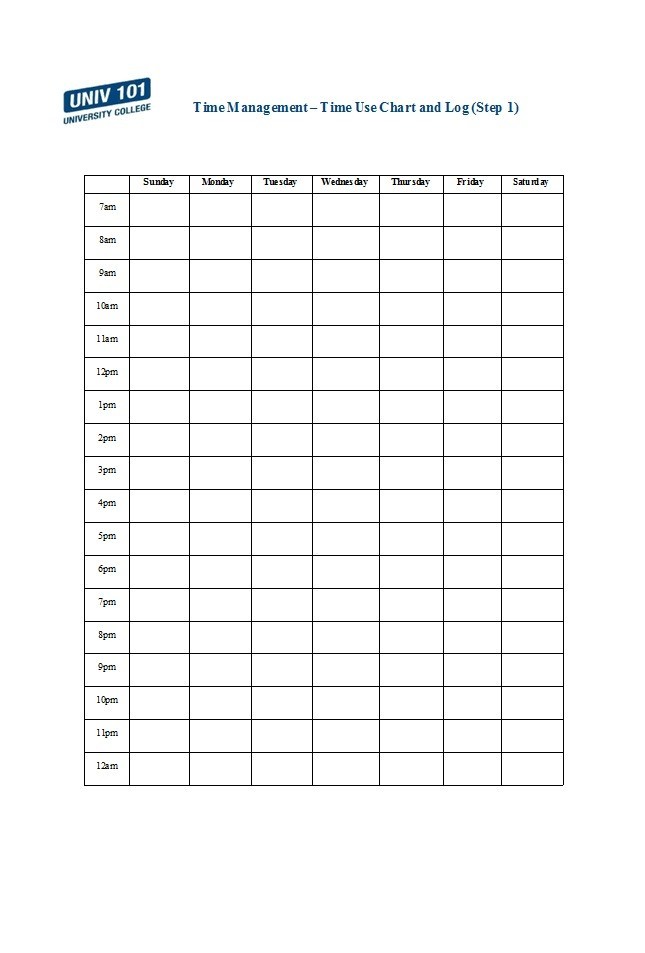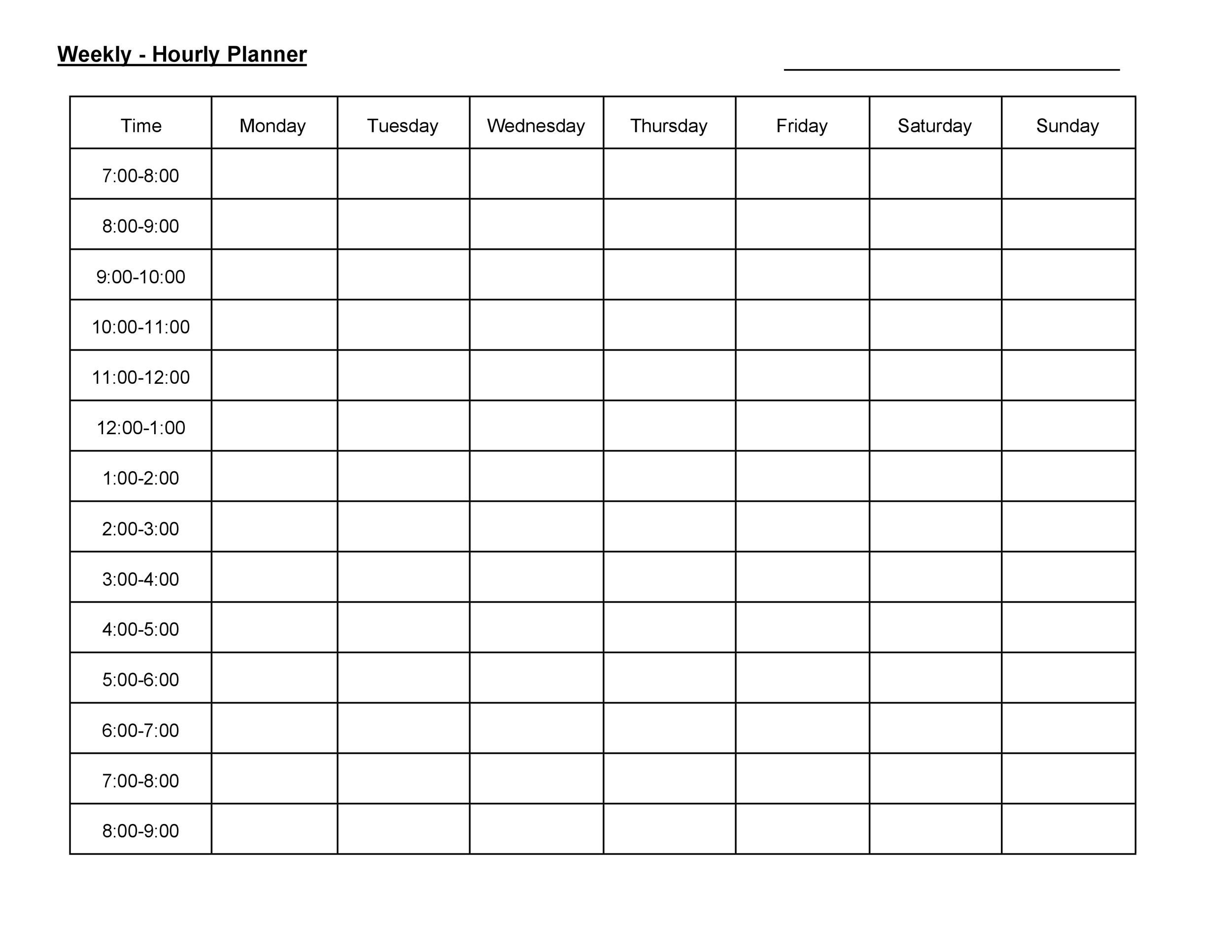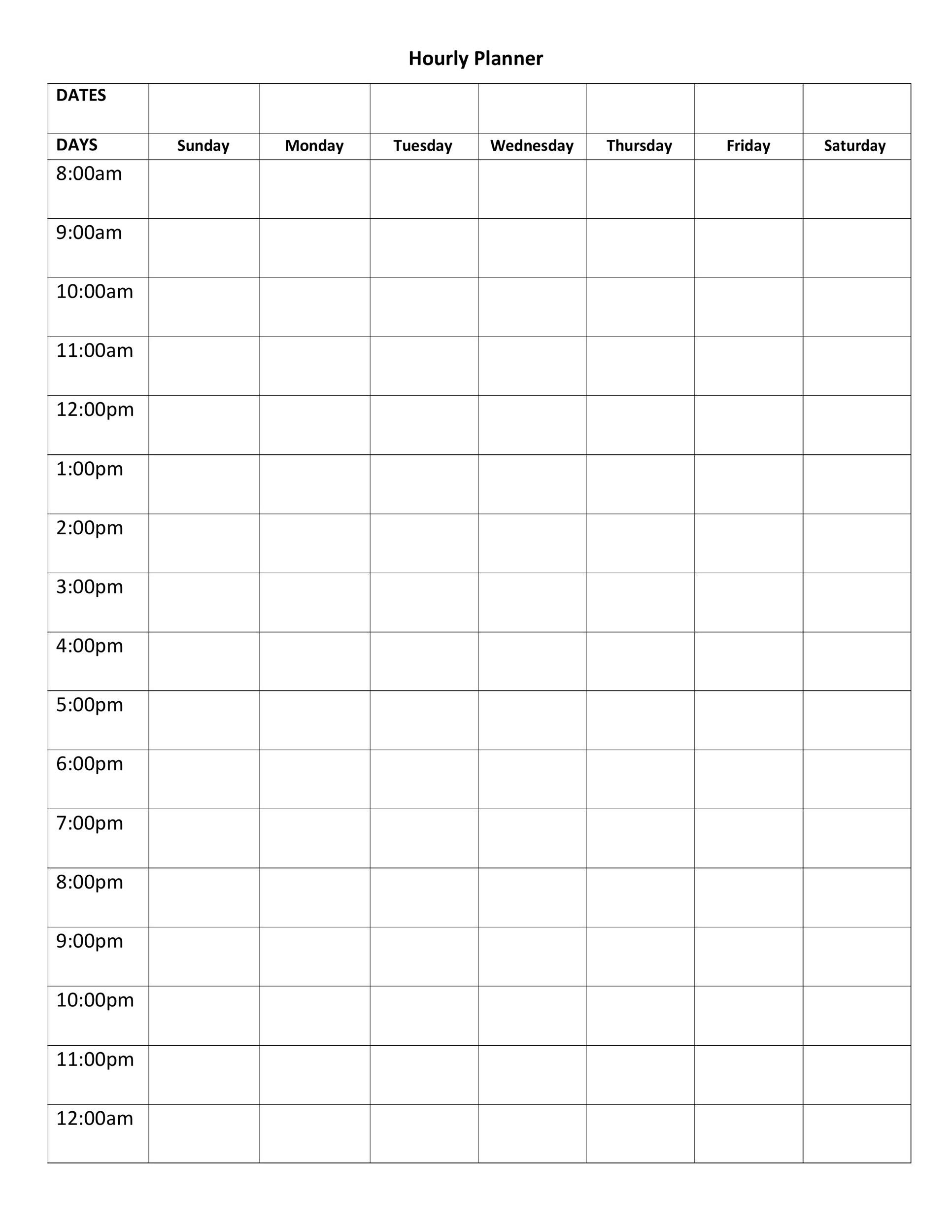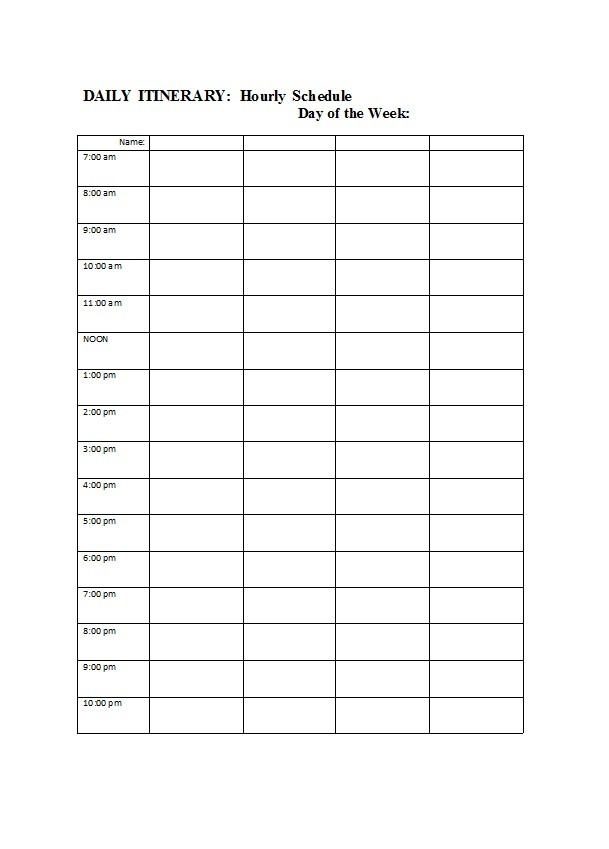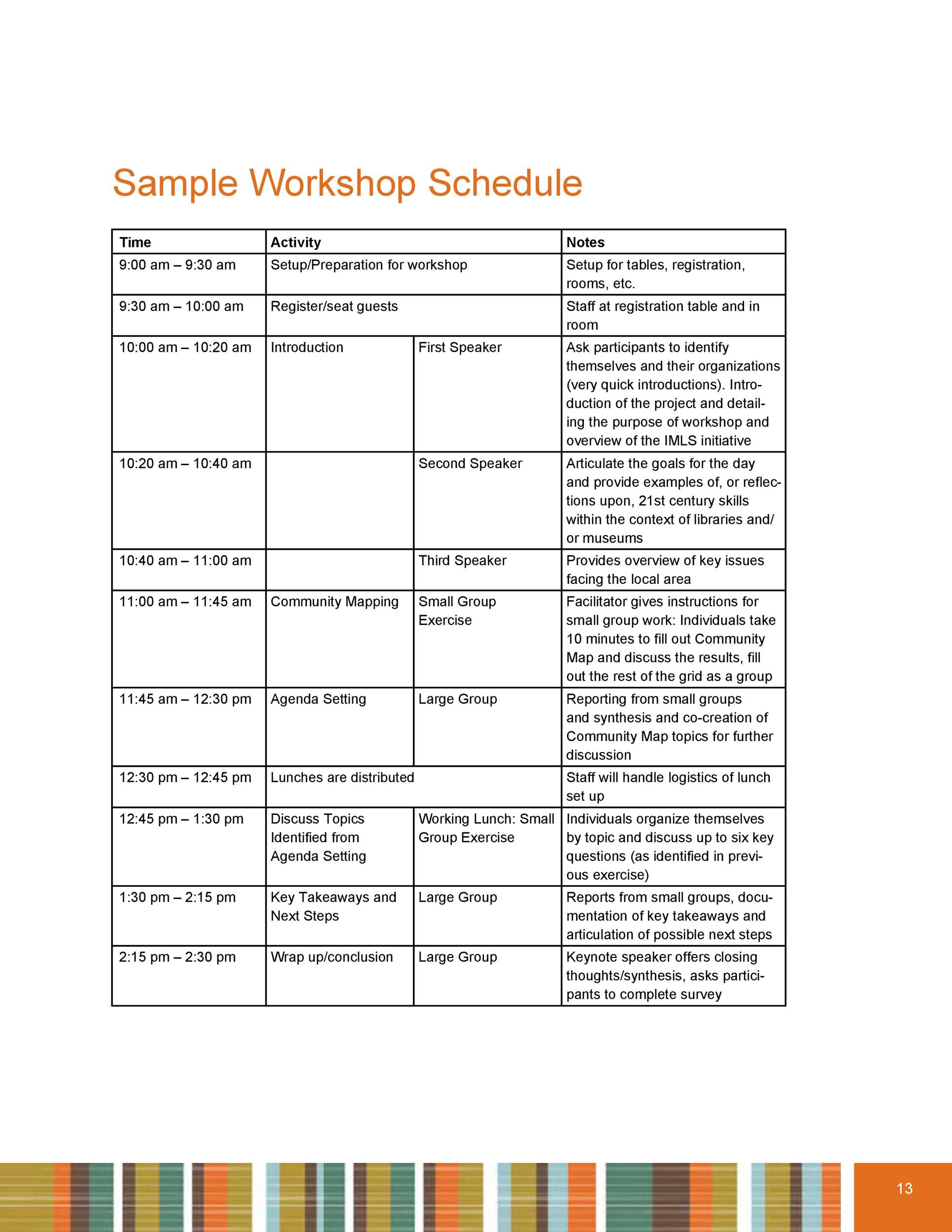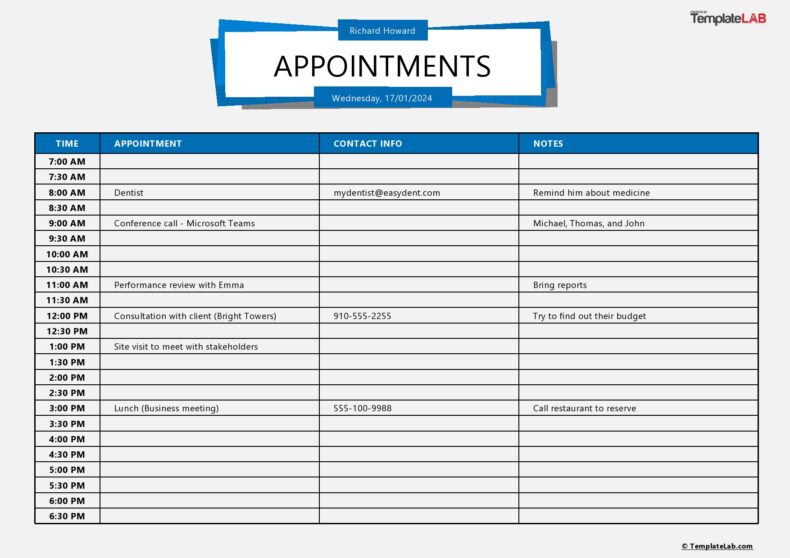We’ve all felt the weight of mounting tasks at some point. However, no matter the volume of work, there are strategies to manage it more effectively.
Using an hourly schedule template can help you organize your day efficiently, ensuring you always have time for every task. Additionally, it offers employers a means to monitor what tasks their employees are handling and the time they spend on them.
Table of Contents
- 1 Hourly Schedule Templates
- 2 What is an Hourly Schedule
- 3 Hourly Schedule Printables
- 4 What is an Hourly Schedule Template
- 5 How to Use Hourly Schedule Templates
- 6 Free Hourly Planners
- 7 Considerations for Making an Hourly Schedule
- 8 What are the Different Types of Schedule Templates?
- 9 Hourly Schedule Template Samples
- 10 How to make a Printable Hourly Schedule
- 11 Hourly Schedule Template Examples
- 12 Conclusion
In this piece, we’ll explore top methods to refine your work routines and master time management. Continue reading for insights on crafting a distinctive hourly schedule template.
Hourly Schedule Templates
What is an Hourly Schedule
An hourly schedule is a tool that details and organizes your daily tasks, helping you optimize every working hour by allocating specific tasks to each time slot.
By using such a system, tasks are finished more swiftly and proficiently, even in high-pressure situations. It aids in not only completing assignments but also in enhancing your organizational skills and efficiency.
The essence of hourly schedules is to manage each day individually, enabling a detailed approach to your daily activities. This framework can capture everything – from your morning wake-up time to your lunch break.
Being aware of your upcoming tasks simplifies the planning process and aids in determining the best strategies for their effective completion.
Hourly Schedule Printables
What is an Hourly Schedule Template
An hourly schedule template, also referred to as a daily schedule template, is a pre-made document designed to help you plan out your daily activities. This user-friendly, printable planner segments your day’s goals and organizes them, optimizing your time usage.
Hourly schedules include a table with each hour separated into its own cell. Next to each cell are the blank fields that you can use to write in your plans for that hour and check them off as you complete them.
Whether you work from home, in an office, or you’re on the road all day, having a visual hourly document with your duties and scheduled meetings for the day will help you better manage your time.
An hourly schedule can help you complete your daily activities quite effectively. Most companies need to be made aware of how important a free hourly planner is to their daily operations.
Hourly schedules can be used to plan an employee’s daily activities and adhere to one guarantee that business operations continue as planned.
Hourly schedules are used by managers in businesses to maintain daily operations and the progress of projects. It can be used for various things, including scheduling meetings, medical appointments, travel schedules, and much more.
How to Use Hourly Schedule Templates
Making an hourly schedule is one thing, but putting it to good use is another. To make sure you don’t create an hourly schedule template in vain, consider the following advice:
- Create a schedule that suits you – Allocate time for specific activities and stick to your goals. Plan to accommodate any downtime you may require. You can also make adjustments to your plan throughout the day or week, but keep in mind that having a plan is better than having none at all.
- Make a schedule with separate times for each activity – For example, do you work best in the morning, the afternoon, or the evening? Keeping your schedule realistic makes it a lot easier to follow.
- Plan your meetings wisely – Allow for extra time travel and unforeseen encounters, like running into a friend on the way to a meeting. If a meeting occurs outside of the office and is planned to last 30 minutes, give it a 45-minute extension.
- Combine calls and meetings – If you need to make ten calls in one day, schedule them one after the other and designate an hour to complete them.
You can even plan lots of different meetings in the same location in the same hour to save time on back-and-forth travel. Here are a few examples of the different types of meetings you can add to your schedule:
A 30-minute meeting to catch up with or get to know another person.
A 45-minute client meeting outside of the office, allowing an additional 15 minutes for travel.
A 10-minute phone conversation to assist someone in need of guidance.
For your team, a daily 15-minute pep talk and catch-up.
One day each week, a 30-minute staff meeting. - Consider work, personal and family time – For example, you might have a dinner party to attend or a parcel to collect during the day. Set time aside for things that might not happen every day.
The same logic applies when arranging a date with your partner or a family outing. Workaholics wind up working throughout family time that should be spent with their loved ones.
Unless you schedule this time in advance. Teach yourself to put down your work as soon as personal time arrives. - Be consistent – By adhering to your hourly schedule, you should soon experience less overwhelm at the end of the day if your schedule is reasonable.
We often find ourselves wondering where time has gone when we haven’t even completed half of our to-do list. Now is a better time than ever to think about how you can gain more or make the most out of the time you have in a day.
When you do, firmly adhere to every routine, schedule meetings, and utilize available appointment times. This will help you develop self-discipline and enhance productivity in both your personal and work life.
Free Hourly Planners
Considerations for Making an Hourly Schedule
There are a few things you’ll need to consider before deciding on an hourly template. The most common schedule types to choose from are hourly, weekly, biweekly, and monthly.
That said, you should clearly define your daily goals before creating a schedule that suits your needs. For example, monthly schedules are beneficial for long-term objectives, while hourly schedules consider every minute of every day.
When creating your hourly schedule template, remember to keep the following in mind:
- The reason behind your schedule
Finding out why you are making the planner in the first place is the first step in this process. Some of the most common reasons to use an hourly schedule template include:
Setting strict due dates on tasks or projects.
Improving productivity and efficiency.
Prioritizing daily activities.
Defining the details of a project in depth.
Connecting daily activities to a long-term strategy. - Time management abilities
Each day offers just 24 hours, with a significant chunk dedicated to meals, rest, and relaxation. Thus, effective time management and daily organization become essential for a smooth workflow.
As you design your hourly schedule template, maximize your day’s potential by incorporating breaks, allotting time for meals, commuting, unexpected events, and impromptu meetings.
This will ensure that the time set aside for work will allow you to focus better.
What are the Different Types of Schedule Templates?
Hourly schedule templates are designed to help you manage your time more effectively. Here are some of the most common scheduled templates and how to use them in your day-to-day life:
- Hourly Planner Template
Whether it’s work-related or involves your personal life, hourly planning templates help to plan your day by the hour. You can use it to break down your to-dos into detail, making it easier to get things done. - Home schedule template for work
Working from home comes with many distractions. From neighborhood sounds to screaming children or persistent pets. Maintaining a work-from-home schedule is one of the best strategies to stop these disruptions and stay on top of your daily tasks. - Daily work schedule template
It helps you to stay on track with everyday tasks by scheduling half-hour intervals. This includes logging in to your laptop and checking your emails first thing in the morning. Or following up with employees or colleagues on the previous day’s duties. - Weekly home schedule template for work
This template can be broken down into three sections: Morning, Afternoon, and Evening. You can also add a meeting/calls section to keep track of the conversations you’ve had over the week and any steps you need to take following those calls. - Daily schedule template for assignments
Use a daily hourly schedule template to identify your top three daily priorities. Categorize your assignments from most to least important or urgent and non-urgent. Make sure to use the time of the day that you’re the most focused on your high-priority tasks. - Weekly schedule template for assignments
Fill this out at the beginning of the week to track your days and the assignments you need to complete. You can leave space between each item to add assignments and their due dates throughout the weekly hourly planner. - Yearly holiday schedule template
Use this template to keep track of your time off, your available vacation days, and how often you work overtime. You can add sections for the days you’ve had off, your available sick days, as well as the balance of what is owed. - Weekly hourly schedule template for business meetings
If you’re someone that has meetings every day, a blank weekly schedule is for you. With this template, you can add a category that describes the meeting agenda, topic, and start and end time.
To get the most out of this template, you can add sections on where the meeting is set to take place or links to online calls. - Employee schedule template
Used to facilitate employee scheduling within the company. It includes the names of the employee, a weekly (or monthly) summary of each employee’s schedule, and the daily roles they assume.
Hourly Schedule Template Samples
How to make a Printable Hourly Schedule
With a printable hourly schedule, you can save time and complete work ahead of schedule – allowing plenty of time for socializing, sleeping, and going out.
We’ve put together five easy steps to creating your ideal hourly schedule template:
- Choose or create a template
Find a template that suits your brand and the goals you have in mind. There are plenty of free websites to find a free hourly schedule template on. Alternatively, you can create your own templates using Google Sheets, Google Docs, Microsoft Word, or even PowerPoint. - Choose a Background
Choose the borders and background designs you like and add them to the page once you’ve found a template format that works for you.
Play around with different backgrounds and save your work as you go. This will allow you to choose your favorite design at the end. - Edit the text
Here’s where you can get creative. Not only can you alter an existing template’s color and size, but you can also add any additional columns or sections you want. To increase your template aesthetics, consider adding photographs for the tasks that need to be completed. - Format the widgets
Try out some widgets that fit your specific needs. For example, your work hourly schedule can include a time for lunch icon, or you can include a food record to keep track of your meals if you’re following a diet. - Print or share your schedule
Once you’ve filled out all the details you want in your printable hourly calendar template, you can print a few copies or send the documents to those who need them.
Alternatively, you can share the link if you’ve created it using an online platform like Google Calendar.
Hourly Schedule Template Examples
Conclusion
Time management is one of the best things to master in life. Once you’ve got the skills to manage your time, you’ll never miss an appointment or a birthday party again.
With an hourly schedule template, you can create better structure in your work and personal life and improve your focus and concentration. This allows you to prioritize the things that matter and eliminate any distractions.











